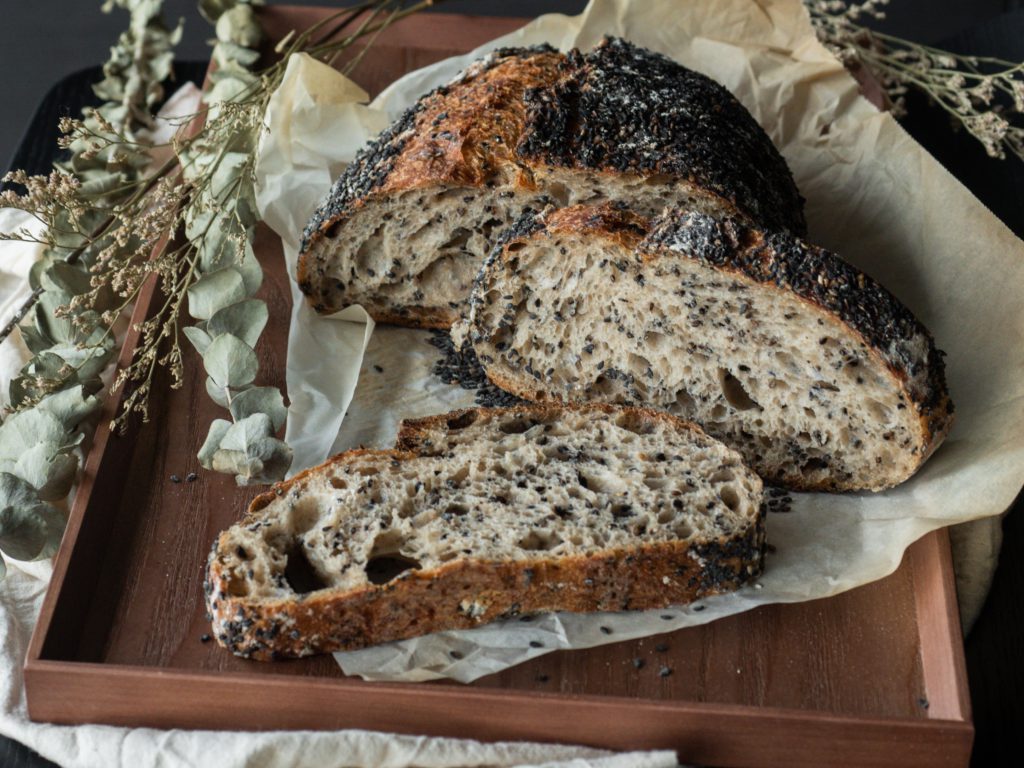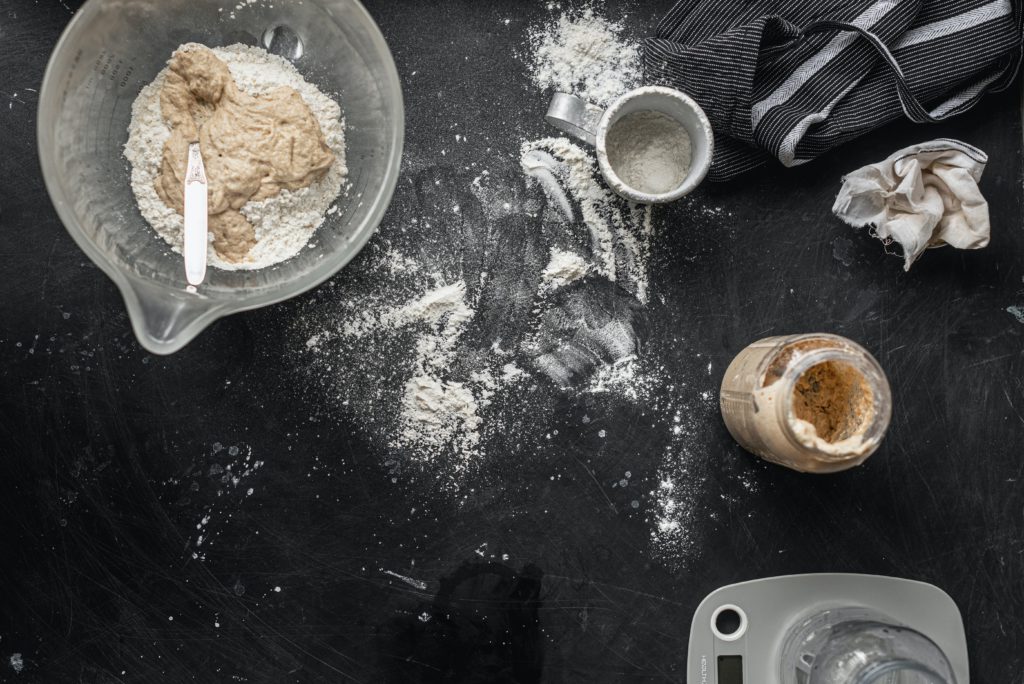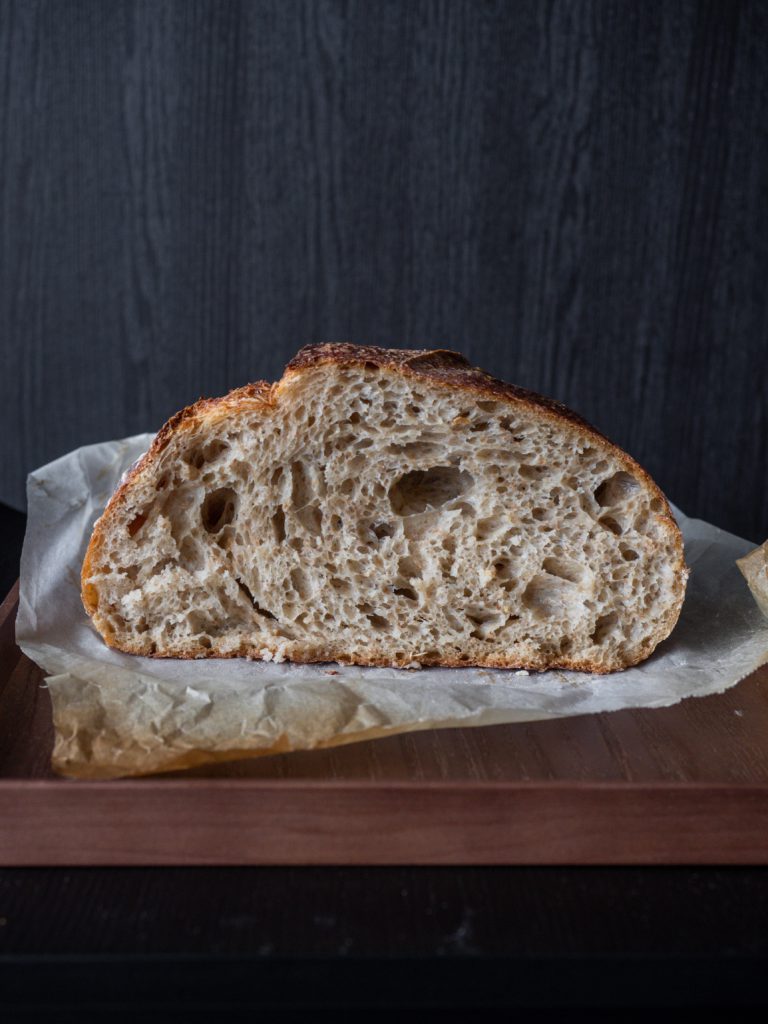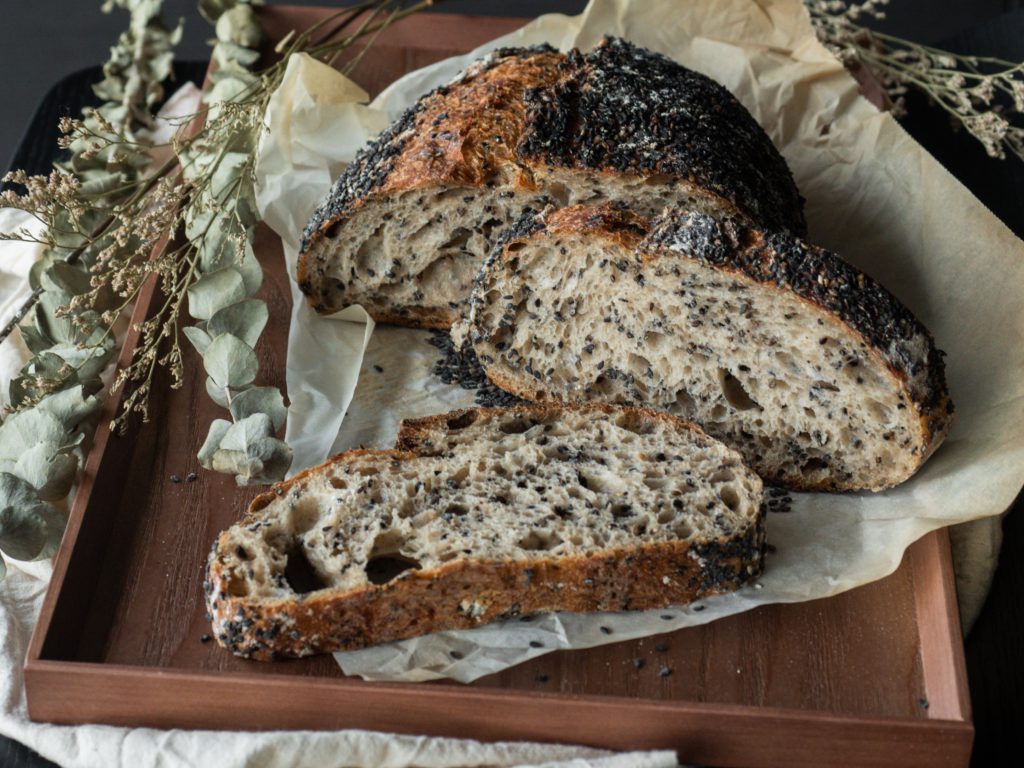Understanding Sourdough

Whether you reached here on the quarantine baker bandwagon or got swept up by new found inspiration, you’re now a part of the sourdough fan club. And I am your new cheerleader. You will find pieces of information, some science behind baking, health talk, recipes and a whole lot of support for new baking adventures on Dough
Today’s article, disguised as education, is my way of slowly luring you into the sour side.
Just in case you’re still on the fence about the sourdough vs. baker’s yeast argument, consider me your local friendly sourdough ambassador. With a little help from Sujit’s insightful workshops, I intend to convert you into a sourdough worshiper. Please join me in this endeavor by beginning with the basics.
So, what is sourdough?
Sourdough is a method of bread making where a naturally occurring leavening agent is cultivated with flour and water. This is then used to leaven breads instead of the baker’s yeast we buy from the store. A Loosely formed dough is contained in a jar and left to ferment for a few days (6-9). It is refreshed everyday by discarding a small percentage and adding some fresh flour and water.

After a couple days, you will be able to observe visible bubbling and expanding of the dough. This means that your yeast is alive and thriving. Feel free to name your creation at this point. (I’m going to refer to mine as my Doughter :). Once your yeast baby is all grown up in a few days’ time, it can be used to make a plethora of baked products.
Now that there is an understand of what is sourdough, let’s talk about why sourdough?
Sourdough culture vs. Baker’s yeast
You might wonder why anyone would make their own yeast by fermentation when you can just buy the same yeast from the store?
The answer is that it is in fact not the same yeast. The yeast found in sourdough goes under the name Candida Milleri. And the yeast available in the market in dry, wet and instant forms is Saccharomyces Cerevisiae. It is also known as, Baker’s yeast.
The point of all this science talk is that they are 2 different species all together. They provide different aromas, and flavor profiles. And once you understand the science behind how each of them work, the community’s enthusiasm for sourdough, seem absolutely justifiable.
For example, take the signature wide, airy crumb that appears when bread reaches peak levels of proofing. Sourdough is able to achieve this easily while maintaining a depth of flavor. This is credited to the Candida Malilleri that lives in sourdough. This beautiful texture is hard to achieve with baker’s yeast as it works and subsequently dies much faster. Increasing yeast quantity to reach that extra airy crumb often fails. it causes over fermentation which results in an overpowering and slightly unpleasant yeasty flavor.

In addition to the rich and complex aromas developed by Candida Malilleri, that pleasantly tangy after taste which puts the “sour” in Sourdough is credited to Lactobacillus Sanfranciscensis. This is a certain bacteria that also grows in sourdough. Unlike baker’s yeast, Candida Milleri is exceedingly tolerant of the acid that the bacterium produces. Hence, both go hand in hand during the fermentation process.
On top of being clearly superior in terms of flavor and texture, sourdough also happens to be much healthier.
Health benefits
The extensive fermentation process breaks the gluten down to much greater extents. This also implies that healthier whole grain flours like Flour X can be used to make sourdough, without worrying about the tough texture that is often seen in baker’s yeast breads.
Sourdough also has high probiotic content which aids in digestion. So even if you are not pleased by a happy meal of deliciously crusty bread, a happy gut will do the trick!

There is so much more to learn about the beautifully complex sourdough method but I hope this short article provides you with a little more clarity and more importantly, curiosity.
My sourdough propaganda does not end here, stay tuned for a lot more science talk, tips and tricks and personal experiences. Until then, I urge you all to raise questions and start debates. I look forward to constructive feedback from any new sourdough enthusiast and opposing debaters alike.


Wowsa @Himanshi
@sujit.sumitran would love some constructive criticism, Sujit sensai
Too early girl. ❤️❤️❤️
That was great knowledge .i am an absolute consumer of sour dough breads ,they are much lighter on the stomach.
Welcome to the fan club @rmanaktala1961.2670 Glad to have your support!
Soon you’ll be a gorgeous provider too. Na?
@ Himanshi, thanks and keep it coming
@sharyu.vaidya.2913 thank youu, can’t wait for you to read the next one!
This was addressed to @rmanaktala1961.2670 . ❤️
Beautiful Himanshi. Just loved the attention to detail while not making this too heavy to read and ingest. ❤️
Amazing content, Thanks for sharing
Amazing job girl
Hey love the content and details! Definitely going to steal ‘Doughter’!